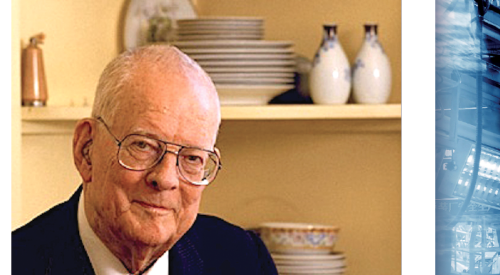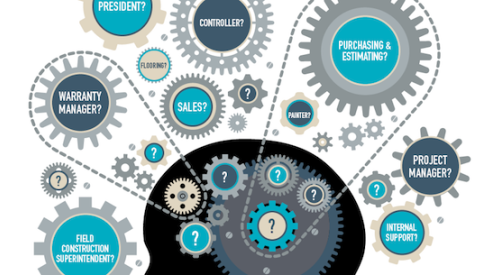| Contact Scott Sedam via e-mail at scott@TRUEN.com
|
I have no idea who first said, "The more things change, the more they stay the same," but it’s an apt description for home builders in their never-ending search for the magic bullets of productivity and process improvement. Just about 30 seconds into my presentation on the planning process to a potential client the other day, the president of a building company interrupted and said, "Hey, now that TQM is dead in Japan, what are all of the consultants gonna do? What’s the next big thing?"
Trying hard not to look at him like he was crazy, I stopped, blinked a couple of times and managed an unimpressive "uh ... pardon me?" With that, he launched into a long declaration about how the Japanese economic problems of the past five years show that total quality management is now a moot subject ... evidently doesn’t work ... end of story.
That got me wondering, do a lot of people believe this? Is TQM dead? Are many of you under the impression that the recent Japanese economic woes mean that Japan’s 50 years of hard labor at the altars of Drs. Deming, Juran, Fiegenbaum, Goldratt, et al., have gone to waste? Do you believe that the Japanese production systems that were admired and revered the world over have been declared "has-beens." Or, as Emily Latella used to utter on Saturday Night Live, "Well ... never mind!"
If so, allow me to make my own declaration. Never have we seen a more perfect example of how our popular media, prone to shallow, sensationalized reporting, can distort a story. Yes, the Japanese economy is a mess. But let me assure you, the Japanese production systems are alive and well. In fact, I shudder to think where that country would be if it had not been so immersed in TQM. So what happened?
There are, as in many things, several competing theories for the Japanese downfall, but most analysts point to Japan’s banking system and money controls at the federal level. Deming actually predicted this several years before his death.
I recall well one night in 1990 during a meeting of our "Deming Study Group of Detroit" that someone asked Deming if Japan would continue to dominate world manufacturing. Deming gazed into the distance with one of his famous, far-out-to-the-horizon looks, as if he were consulting a higher power, and uttered, slowly, "I fear for them, if they continue to emulate the Western banking philosophy." One member asked the good doctor to elaborate. Deming, never one to use a lot of words when not needed, said softly, "short-term ... short-term," and then waved his hand, the signal we all had learned meant "let’s move on to something else."
At the time, I wondered about Deming’s prediction. It didn’t seem to make sense on the face of things. After all, in 1990, nine of the 10 largest banking organizations in the world were Japanese. These banks were buying up venerable American real estate parcels, such as Rockefeller Center, scaring the wits out of all red-blooded patriots on this side of the Pacific.
But Deming obviously knew something was up. Ten years later, by 2000, exactly one of the 10 largest banks in the world was Japanese, and most of those real estate holdings had been sold at a loss. The Japanese equivalent of the U.S. Federal Reserve recently dropped its internal funds rate to near zero - trying to stimulate something. In high-brow consulting circles, this is called "a clue." In Japan, things have gone very wrong on the banking side.
In addition to their monetary problems, the Japanese have suffered from a lack of strategic marketing vision - as described aptly by John Porter, the Harvard marketing guru. He makes a critical point in several published articles on the subject: If you spend all of your time on process improvement and benchmarking best practices, the competitive edge eventually vanishes because those process improvements and best practices become the standard. Everybody else has what you have. It becomes relatively easy to imitate. It doesn’t mean you can forget about it, but in industries such as automotive and electronics, cost reduction and quality improvement have reached a point of severely diminished returns from the expenditure of additional time, labor and equipment. When quality and low cost become givens, companies have to differentiate on something else.
If you don’t believe this, drive any Japanese car - or Korean, for that matter. Virtually perfect every time. This is a direct outcome of the production systems, led by Toyota, Honda and others. American and European manufacturers have made incredible strides, but ask any of their engineers who is the best in the world, and you’ll get the answer very quickly - the Japanese. And they did it though an almost fanatical dedication to TQM.
Home building is clearly a far cry from automotive production in, for example, quality process control. We have a long way to go before we have wrung the last drop from making a name for ourselves by delivering superior quality. Only a tiny percentage of home builders can honestly stake any lasting claim in that venue. We are still looking for the builder who has the functional equivalent of the Toyota production system.
So don’t give up on the principles of quality and process improvement just yet. Far from taking Japan down, it was probably the only thing that kept the Japanese in the game while their MBA-trained financiers played fast and loose with their money. Call it TQM or what you will, but continual improvement of product and process should still be on every builder’s radar screen.
And unless I am very wrong, consultants in the quality field will probably find work for many years to come.
Also See
Scott Sedam's Editorial Archives












